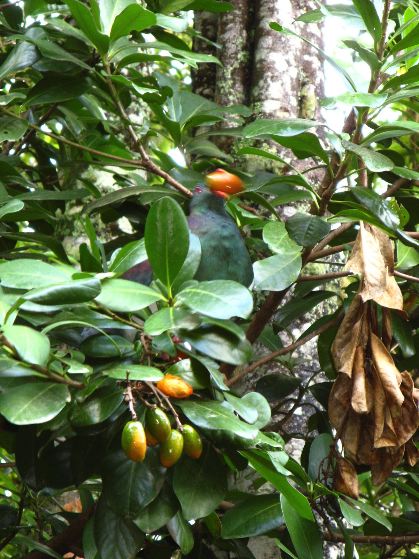To go Back at any time,
use Browser's "Previous Page"
Driving north from Wellington, our first overnight stop would have been the town of Wanganui --- astride a river by the same name --- if we had had more time. Instead, it was only a lunch spot and brief encounter. For the bird’s eye view it promised, we first made our way to the top of Durie Hill. The most fascinating way to get to the top is through the Durie Hill Tunnel which burrows 670 feet into the hill. It has been open to the public since 1919:
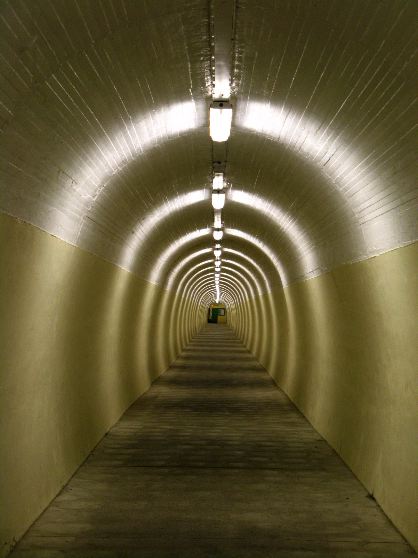
Waiting at the end of this long, straight passage is an old elevator that for a princely sum of 50 cents offers a rattly ride to the summit. The tunnel and elevator were built to attract potential residents to the top of Durie Hill where they might be smitten with this fine view of Wanganui:
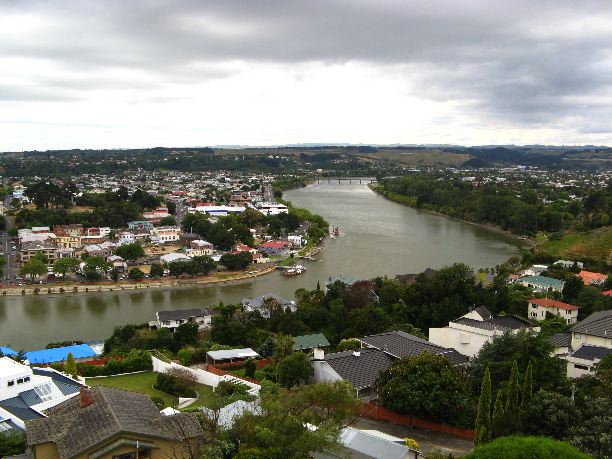
Smitten ourselves, we nonetheless managed to descend the way we came and wend our way to the town center:

A downright pleasant, laid-back kind of place is Wanganui --- and, we understand, real estate prices are still a bargain.
This would be a good time to explain why we wanted to get to New Plymouth in the first place. After all, it is a bit out of the way when driving from Wellington to Auckland. The route we took also bypasses some worthwhile attractions in the central part of the island. The main draw near New Plymouth is a beautiful volcano called Mt Taranaki (by the Maori people) or Mt Egmont (by the European settlers). From almost all sides, its symmetry is a match for that of Mt Fuji in Japan --- so much so that when the “Last Samurai” was filmed near here, Mt Taranaki/Egmont was the stand-in for Mt Fuji (with minor digital touchup). Unfortunately, during our two night stay in New Plymouth the weather did not cooperate. With cloudy, drippy weather closed in on the mountain, we were never lucky enough to see it. However, to prove we had sound reasons for going out of our way, we include here an Internet photo of this splendid peak:
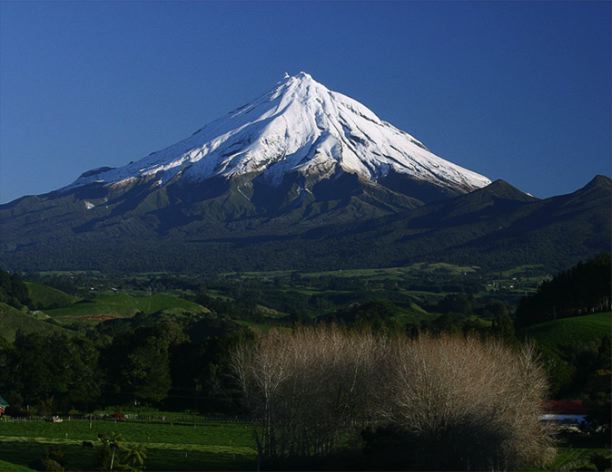
Not ones to grumble that our cup was half empty, we set off to explore the Coastal Walkway, hopeful the clouds would eventually clear:
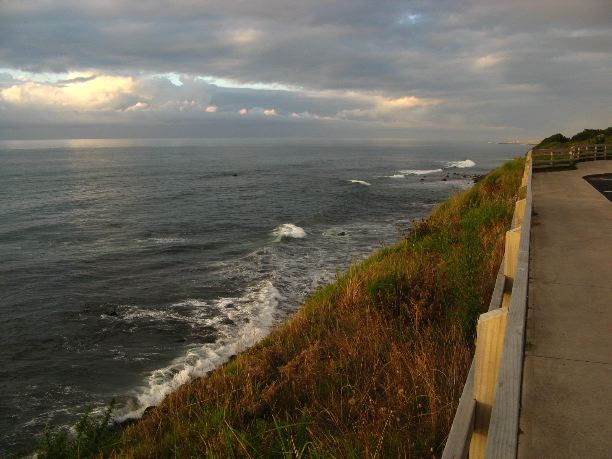
Below are three more shots from that walk:
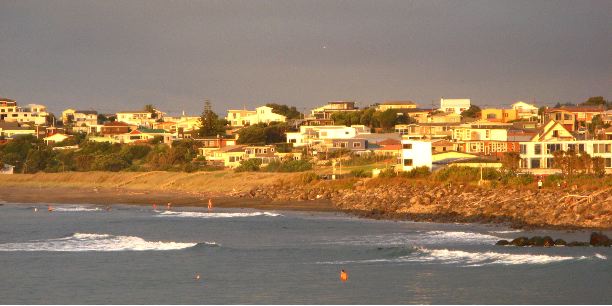

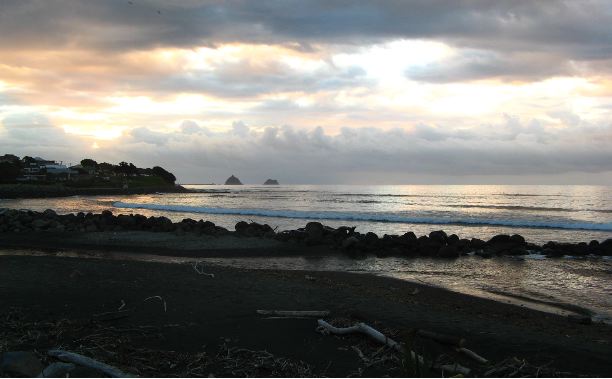
The twin peaks above are in the Sugar Loaf Islands group, so-named by Captain Cook in 1770 and now a Marine Park. To the left of the peaks, on the horizon, a wharf that marks the other end of the Coastal Walk is barely visible. With more clouds and drizzle next day, we walked to that wharf which is part of a deep water port. Happily, tea and hot chocolate were readily available there in a dry, warm and comfortable restaurant.
In the heart of town, New Plymouth has a large, appealing park called Pukekura with walk paths around a string of lakes:

One cost-saving feature we’ve never encountered in a park before was the self-operated waterfall. The viewer was expected to push an On button to start the water flow. There was no charge but the waterfall would operate for only a few minutes before another push was needed. A nearby fountain operated the same way.
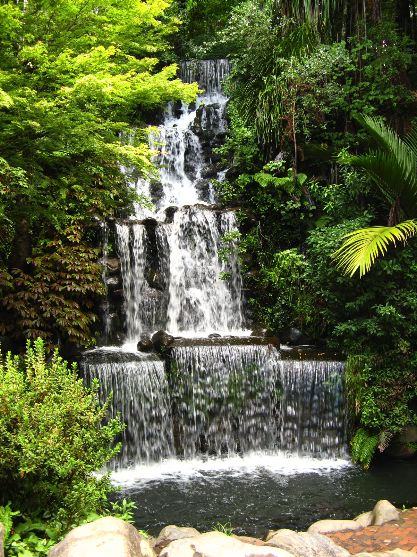
Pukekura Park has a popular lakefront bandshell --- designed perhaps to keep unruly fans off stage:
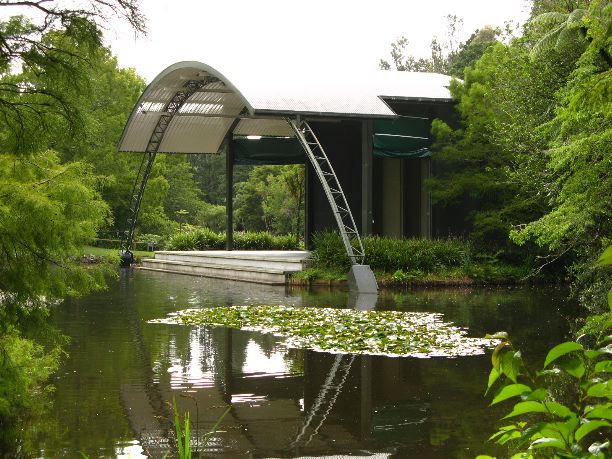
We couldn’t miss this wood pigeon in a guava tree:
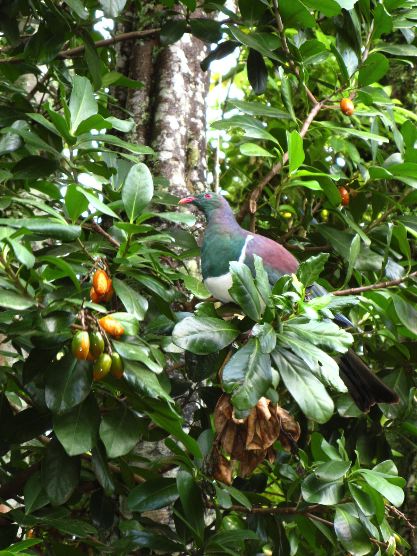
Expecting that he might peck at the hanging fruit, were we surprised when he devoured several whole!
